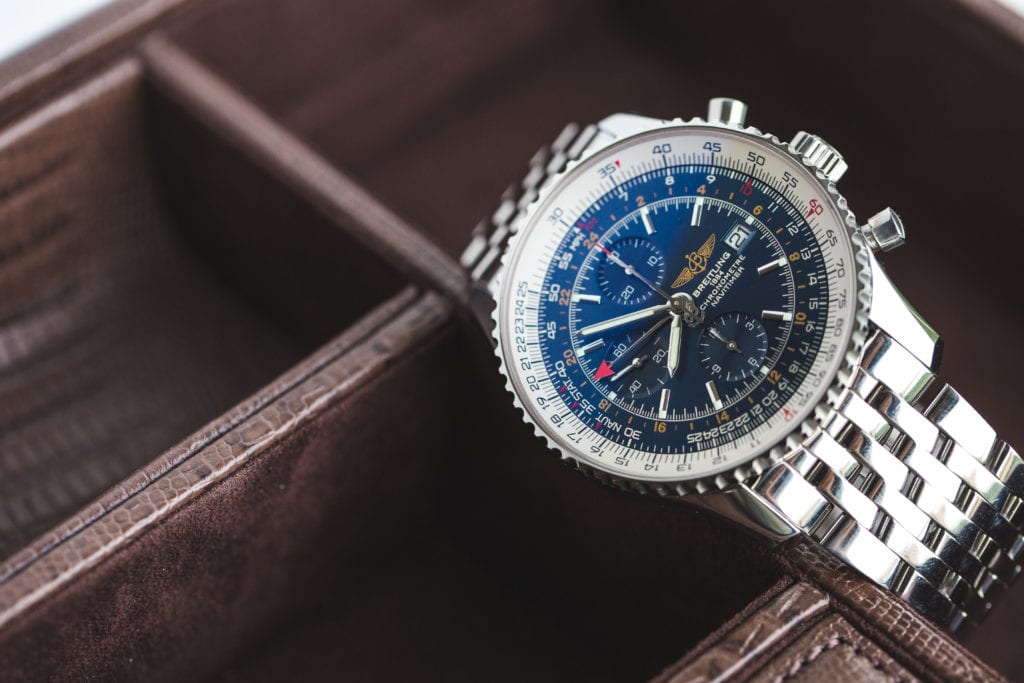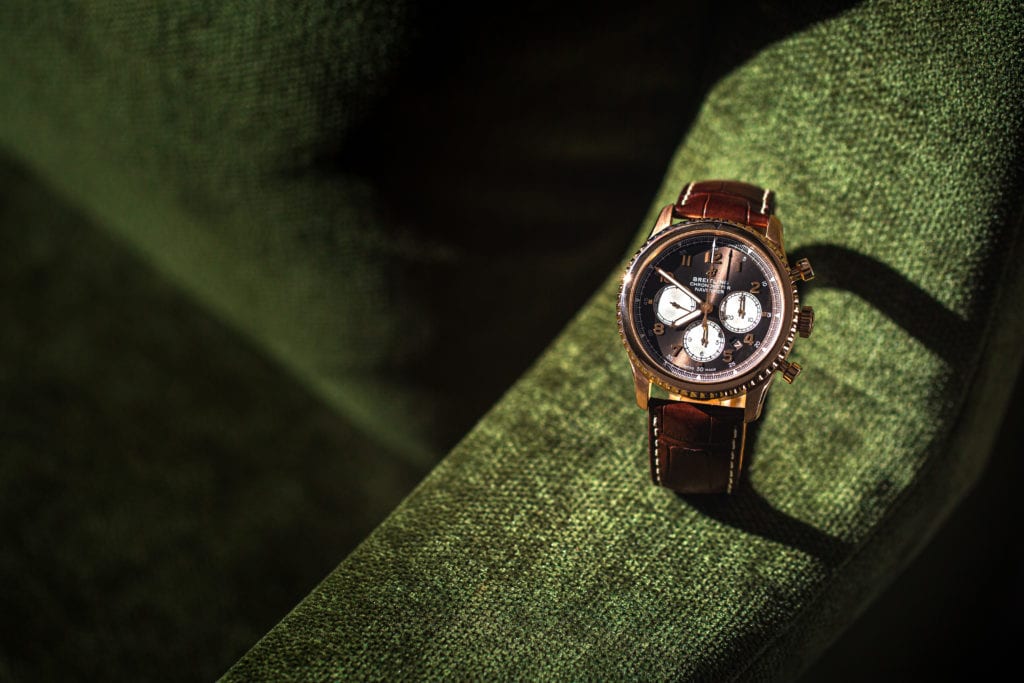Brief History of the Breitling Navitimer
The Breitling brand has become synonymous with superior pilot watches since the release of the Chronomat in 1942. With its debut came the introduction of a totally new and patented technology specifically designed for pilots: the slide-rule bezel. Over the course of the next decade, the brand continued to develop this technology. During that time, they forged a partnership with the Aircraft Owners and Pilots Association. The AOPA helped Breitling refine the slide-rule bezel in a way that would best serve the evolving needs of pilots. By 1952, the pair had created a new and enhanced slide-rule bezel, which launched in an all-new model: the Navitimer.
Differences between the Chronomat and Navitimer

A slide-rule bezel was not a completely innovative feature when Breitling first introduced it in the Chronomat in 1942. What made Breitling’s slide-rule bezel unique was that the brand integrated it with a chronograph complication. Fittingly, the slide-rule bezel of the Chronomat is called the Type 42. In addition, the slide-rule bezel of the Navitimer is called the Type 52. There are two primary differences between the two types of slide rule bezels in the two different models. Early Chronomats featured different numbers or units on both the outer and inner scales compared to the Navitimer and modern Chronomat models.
Understanding the Slide-Rule Bezel
A slide-rule bezel can look pretty intimidating at first. It contains two logarithmic scales, an inner one and an outer one. The outer scale rotates bi-directionally, and the inner scale is fixed. Together, they can help the wearer perform a variety of mathematical calculations. It’s also important to note that the slide rule bezel doesn’t take into account decimal points.
So, for example, the number 25 and 250 would be notated the same on the slide rule bezel. Because this function lacks decimal points, you need to have a general idea of the answer when performing a calculation. Lastly, since the slide-rule bezel is comprised of logarithmic scales, every time you double a number, the distance will be the same. Again, for example, the distance between ten and twenty is the same as the distance from twenty to 40. All of this information may seem overwhelming. However, it should make more sense once we explore how to use the Navitimer’s slide-rule bezel with some specific examples.
How Pilot’s Might Use the Navitimer’s Slide-Rule Bezel

Pilots primarily used the Navitimer to calculate things like speed and distance. This would help them to track important elements like flight times, fuel consumption, or wind impact. So, for example, here’s how a pilot might calculate fuel consumption. First, the pilot needs to know the average amount of fuel used per hour and the length of the flight. Say the plane uses an average of twenty liters of fuel per hour and the flight is three hours long. The pilot would rotate the outer scale until the unit twenty lined up with the twelve-o’clock hour marker. This would set the rate. Then, the pilot would locate eighteen on the inner scale to signify 180 minutes or three hours. Lastly, the pilot would read the corresponding number of liters consumed after three hours on the outer scale: 60 liters.
How to Use the Navitimer’s Slide-Rule Bezel for Everyday Calculations
If you’re not a pilot, you can also use the Navitimer’s slide-rule bezel. It can help you to perform other calculations that are more applicable in daily life. One example is calculating the tip on a bill at a restaurant. Say you want to calculate a 20% tip on a $40.00 tab. Remember that calculating a percentage is essentially a division equation. In the case of a 20% tip, you’ll always be dividing by five. When doing a division equation on a slide-rule bezel, your dividend will always be on the outer scale.
Subsequently, your divisor will always be on the inner scale. Another important thing to note when doing division or multiplication calculations with the slide-rule bezel is the red number ten on the fixed inner scale. So, in this example, rotate your outer scale until 40 lines up with five on the inner scale. Then, look at the red number ten on the inner scale and read the corresponding number on the outer scale. This should be eight or an $8.00 tip.
Other Applications of the Navitimer’s Slide-Rule Bezel

In addition to these more detailed examples, you can use the Navitimer’s slide-rule bezel for a wide array of calculations. One instance is conversions. The Navitimer can help you convert miles to kilometers, Fahrenheit to Celsius, or dollars to Euros. We hope this helps you understand how to use a Navitimer a bit better and some practical applications where it could come in handy.
Get More Articles Like This in Your Inbox
We're constantly creating great content like this. So, why not get it delivered directly to your inbox? By subscribing you agree to our Privacy Policy but you can unsubscribe at any time.





